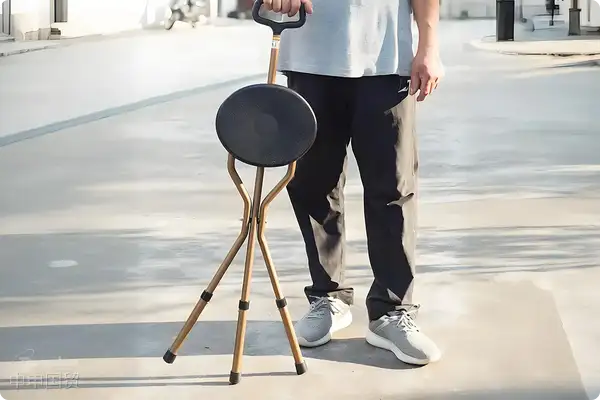- Shanghai Zhongshen International Trade Co., Ltd. - Two decades of trade agency expertise.
- Service Hotline: 139 1787 2118
For imported walking - stick stools, theseforeign tradeare the knowledge you must know
As a seasoned foreign trade professional with 20 years of experience, I often receive inquiries from clients about importing walking stick stools. This multifunctional product, combining the features of a walking stick and a stool, indeed brings convenience to the elderly. However, the import process is fraught with numerous "hidden pitfalls." Today, let me guide you through the entire process of importing walking stick stools in the most straightforward way possible.

1. Preliminary Preparation: Laying the "Foundation" for Clearance
I remember a customer last year whose entire batch of goods was held up at the customs for half a month due to incorrect HS code classification. Thereforethe first step must be to confirm the HS codeWalking - stick stools are usually classified under 9013.1000 (other walking sticks), with a tariff of approximately 8% and a VAT of 13%.
- Essential document checklist:
- Commercial invoice (the amount should be reasonable to avoid disputes over customs valuation)
- Packing list (indicating the material, quantity, net weight/gross weight)
- It is recommended to verify through the following methods:(key for preferential tariff rates)
- Product instruction manual (in both Chinese and English, including usage instructions)
- Special reminder: Note: If there are metal parts, a material certificate is required; if the seat surface is made of leather, an animal quarantine certificate is also required.
II. International transportation: These details determine the cost
Walking - stick stools are small in size but fragile. It is recommended toChooseAir Transportation+ use cushioning packaging.Last year, we assisted a client with imports from Germany by adopting a packaging solution of "honeycomb paperboard + bubble wrap," which reduced the damage rate to zero. Key points to note during transportation:
- Confirm the regulatory conditions of the port of destination in advance (some ports have a fast - track for elderly products)
- Purchase full - journey cargo insurance (especially for high - value carbon - fiber - material products)
- Sensitive Word Reminder: Avoid using medical-related terms such as "medical" on the waybill.
III. Domestic Customs Clearance: The Wisdom of "Dealing with" Customs
Last month, we just handled a case where goods were detainedbecause the anti - slip mat did not meet the standards.The customs inspection rate for elderly products is as high as 30%. Key concerns are:
- Safety performance: The diameter of the anti - slip mat must be > 35mm (it is recommended to attach a test report)
- Height marking: The product should indicate the applicable height range
- Warning label: There must be Chinese instructions for use and precautions
Legal inspection process: Declaration → Tax payment (tariff + VAT) → Inspection (1 - 3 working days) → Release. It is recommended toreserve 5 - 7 days for customs clearance, especially for new customers importing for the first time.
IV. Goods Pickup and Settlement: The Final "Decisive Step"
Dont relax immediately after customs clearance! There was once a customer whose batch of bamboo walking stick stools cracked due to the high temperature in the warehouse. When picking up the goods, pay attention to:
- Warehousing environment: Avoid humid and high - temperature environments
- Cost accounting: In addition to regular expenses, possible additional costs include:
- Customs laboratory fees (if material testing is required)
- Container demurrage fees (generated when the inspection exceeds the time limit)
- Label rectification fees (when the Chinese label is unqualified)
Practical suggestions for importers
Based on years of experience, I have summarized3 guidelines to avoid pitfalls:
- Before purchasing, require the supplier to provideaging test reports(especially for plastic parts)
- Sample import: For the first cooperation, it is recommended to import samples first (you can use the express channel to save costs)
- Double - header customs declaration: Customers withoutimport and exportthe right can borrow our companys qualifications for customs declaration
Final reminder: Importing walking stick stools is not just a simple transaction of goods—it's closely related to the safety of the elderly. Choosing suppliers with CE/SGS certification is the sustainable approach. If you have any questions about imports, feel free to reach out to me, your "old friend in foreign trade," for a chat.
Related Recommendations
? 2025. All Rights Reserved. Shanghai ICP No. 2023007705-2  PSB Record: Shanghai No.31011502009912
PSB Record: Shanghai No.31011502009912










